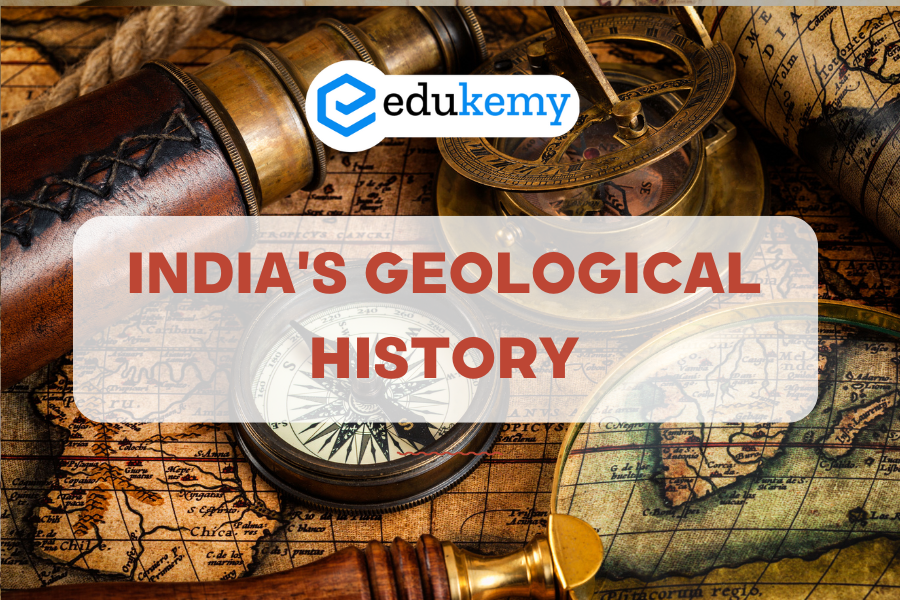Explore India’s Geological History, from plate tectonics to diverse landscapes, and understand its impact on resources, climate, and UPSC Geography preparation.

Contents
Introduction
India’s geological history is a fascinating tale of plate tectonics, mountain-building processes, and the evolution of diverse landscapes. Understanding the geological timeline is critical for UPSC aspirants with Geography as an optional subject, as it not only explains India’s physical features but also influences its climate, natural resources, and biodiversity. Below is a comprehensive guide tailored for UPSC preparation.
Check Shabbir Sir’s Class notes here
Click here to download
India’s Tectonic Framework
1. The Peninsular Block:
- A stable block comprising cratons, shields, and plateaus (e.g., Deccan Plateau).
- Rich in minerals like iron ore, bauxite, and mica.
2. The Himalayan Region:
- Young fold mountains formed by the ongoing collision of the Indian and Eurasian plates.
- Subject to frequent tectonic activity, leading to earthquakes and landslides.
3. Indo-Gangetic Plains:
- An alluvial plain formed by the depositional activity of the Indus, Ganga, and Brahmaputra rivers.
- Fertile and densely populated.
4. Coastal Plains and Islands:
- Sedimentary deposits and marine processes have shaped India’s eastern and western coastal plains.
- The Andaman and Nicobar Islands were formed due to subduction of the Indian plate beneath the Burmese microplate.
Conclusion
India’s geological history is deeply interconnected with its physiographic features, climate, and resources. For UPSC aspirants, a clear understanding of geological processes provides insights into diverse topics like mineral distribution, disaster management, and environmental issues. Revising India’s geological timeline with diagrams and correlating it with current geographical phenomena will enhance your preparation.
To get free counseling/support on UPSC preparation from expert mentors please call 9773890604
- Join Geography Optional Course – Click Here
- Get Geography Hard Copy notes – Click Here

